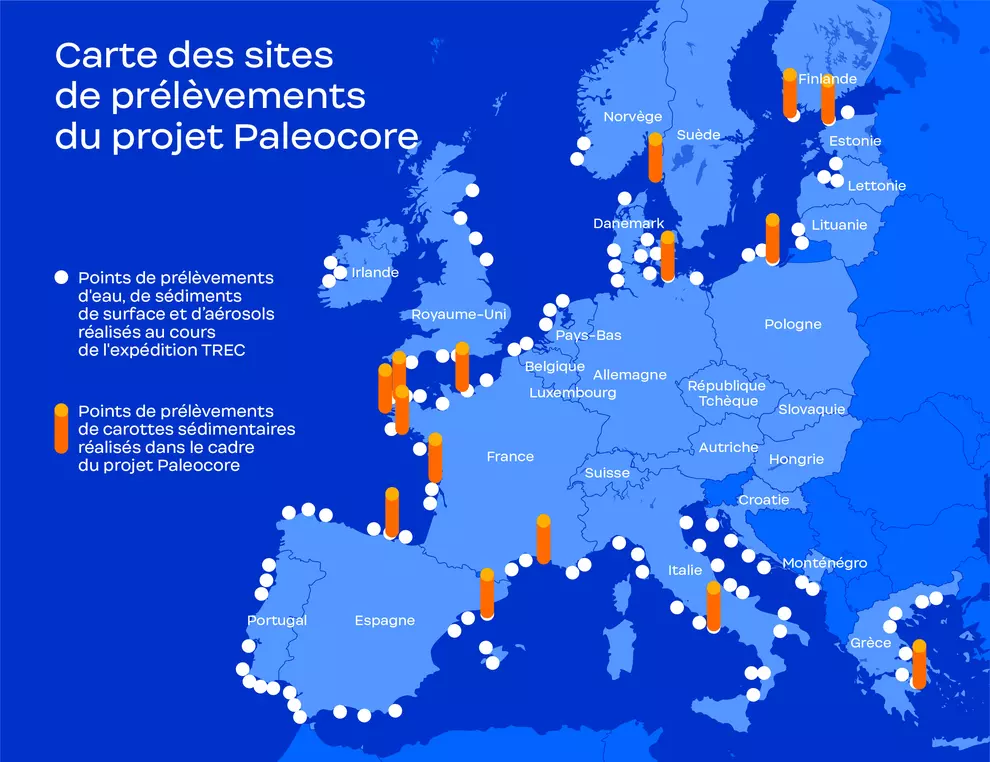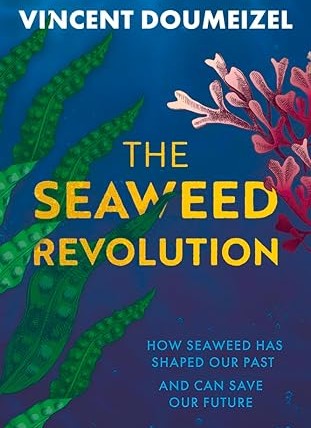
Pollution from Human Activities: Tracing Its Impact on European Coastal Ecosystems
Any pollution generated by human activities eventually makes its way to the ocean, with coastal ecosystems at the forefront of this impact. In 2023, Ifremer embarked on a large-scale European investigation by collecting 124 sediment cores from 15 coastal sites across 9 countries. The objective: to determine whether and how major historical events of the Anthropocene, such as World War II, the Chernobyl disaster, or the rise of certain practices ranging from pesticide use to port construction, have disrupted the fragile health of coastal ecosystems.
Did you know that human history is also archived in marine sediments? This is what Raffaele Siano, a researcher in molecular ecology of microorganisms at Ifremer, revealed in 2021 in the journal Current Biology. He demonstrated, through traces of ancient DNA preserved in the sediments, a clear correlation between drastic and irreversible changes in plankton communities in the Brest harbor and major human impacts, particularly World War II and the rise of intensive agriculture.
These locally demonstrated discoveries paved the way for a broader project called Paleocore, which is part of two European programs:
- The TREC project (Traversing European Coastlines), designed by the EMBL – European Molecular Biology Laboratory, in collaboration with the Tara Ocean Consortium, the Tara Ocean Foundation, EMBRC, and over 90 scientific institutions, including Ifremer. Its goal is to explore the biodiversity and adaptability of microbial communities and a selection of key organisms along European coastlines, from Finland to Greece. In 18 months, the involved scientific teams have collected 70,000 samples of water, soil, sediment, and air from 115 sampling sites on land and at sea.
- The BIOcean5D project, jointly led by EMBL and CNRS, involving more than 20 institutes across Europe, including Ifremer. It shares a common goal of exploring marine life and its evolution based on space, time, and the impacts of human activities.
Going Back in Time to Better Understand Current and Future Changes
Unlike other studies organized under TREC or BIOcean5D, Ifremer scientists here did not aim to study the current diversity of plankton and organisms by collecting live samples.
« The interest of the Paleocore project lies in this ‘paleo’ prefix, » emphasizes Raffaele Siano. « Just like paleontologists who used metal traces and fossils found in geological layers to link the extinction of dinosaurs to intense volcanic activity and a meteorite impact during the Cretaceous, we seek to link changes in plankton communities to major historical human impacts by tracking pollutants and traces of DNA from different plankton species in ancient marine sediments. »
Over 10,000 samples collected from 9 European countries.

Out of 124 sediment cores measuring between 50 and 120 cm collected in 2023 and 2024 across 15 European sites, Ifremer teams, in collaboration with local partners and EMBL, extracted 10,000 samples. These cores provide a timeline stretching back to the early 21st century, the late 20th century, or even further for some samples, covering periods as far back as the 18th century. They aim to link biodiversity changes to the history of human activities in Europe, from the impacts of World War II in 1945 to microplastics in the 1990s, pesticides in the 1980s, and the Chernobyl disaster in 1986, as well as significant local natural or anthropogenic events.
« Depending on the location, we focus on specific peaks of human activity or major historical events, » explains Raffaele Siano. « In Naples, for example, the cores allow us to go back to 1816 and trace changes potentially linked to pesticide use in agriculture, urbanization, the rise of tourism, and even the eruption of Mount Vesuvius (1944). Meanwhile, sediment cores from Lorient (France), Gdańsk (Poland), and Rostock (Germany) are expected to preserve records of port development and World War II. Samples taken from La Tremblade and the Thau Lagoon in France, and Turku in Finland, are respectively focused on the effects of oyster farming and salmon aquaculture. »
Comprehensive Analyses to Uncover the Story of Each Core
Once transported to Ifremer, each sediment core embarks on a meticulous analysis journey. They have all been dated in collaboration with the EPOC research unit in Bordeaux. Five Ifremer teams are examining them from various angles, including sediment grain size, the presence of chemical contaminants, genetic analysis of DNA traces left by past species, and identification of organisms under one millimeter still residing in the sediment (meiobenthos) and phytoplankton cysts.
The first results, expected by late 2025, will offer a new understanding of the ecological history of European coasts and their connections to human history. Additionally, they will assess the resilience time of ecosystems to such impacts, providing critical insights for European-scale strategies on marine contamination management and biodiversity protection.
Source: ifremer



